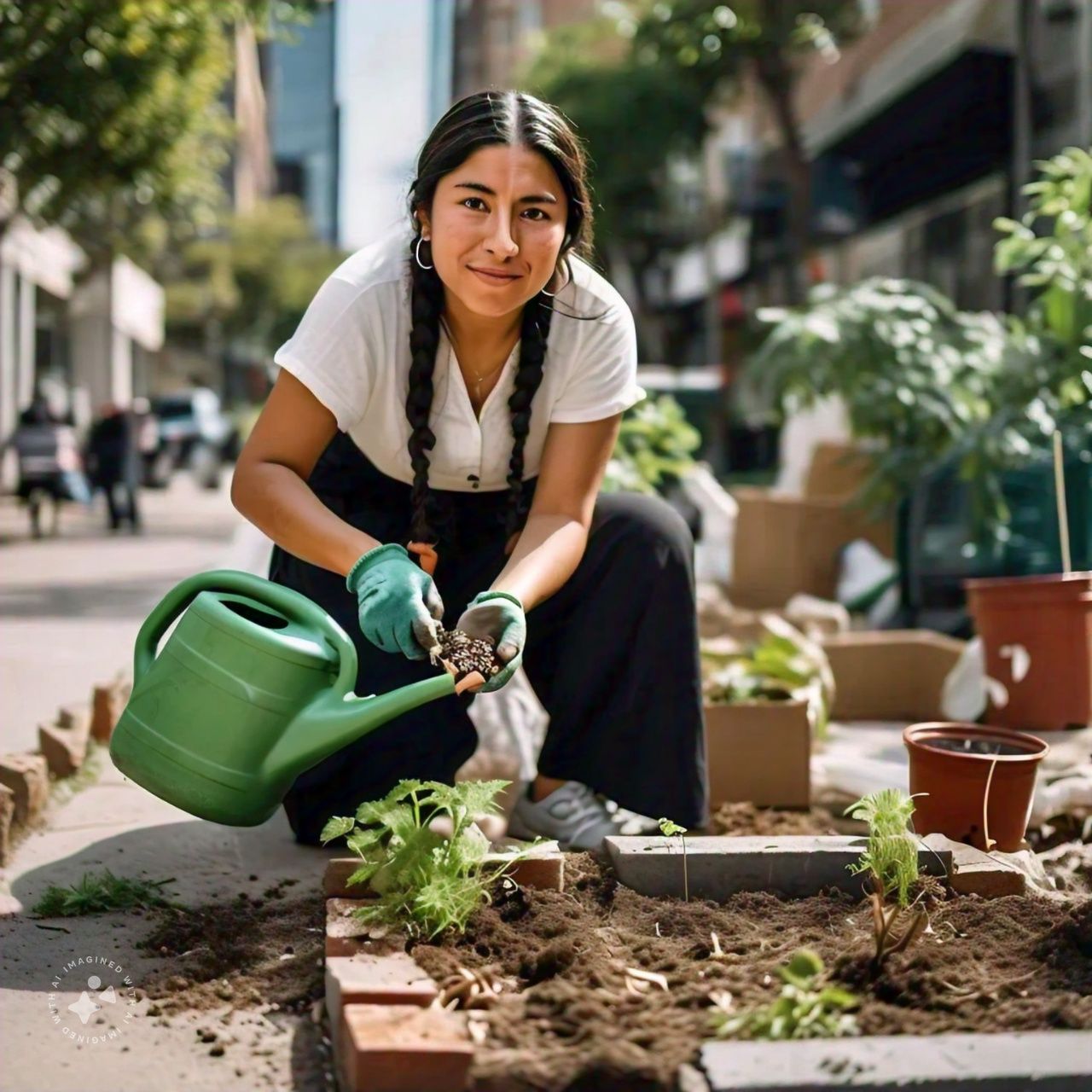Guerrilla gardening is a growing trend that urban environmentalists and community activists are embracing to bring more green spaces into cities. It’s an unconventional, yet impactful movement, where individuals take it upon themselves to plant and cultivate gardens in spaces that are neglected or underutilized—without seeking permission from local authorities. This article explores the history, practices, benefits, and challenges of guerrilla gardening, offering a deep dive into how this movement is reshaping urban landscapes.
The Origins of Guerrilla Gardening
Guerrilla gardening traces its roots back to the 1970s in New York City when activists, disillusioned with the lack of green spaces and the abundance of abandoned lots, took matters into their own hands. The term “guerrilla” is derived from the clandestine and often unsanctioned nature of these activities, likened to guerrilla warfare, where small groups use unconventional methods to achieve their goals.
Liz Christy, an artist and community activist, was one of the first to popularize guerilla gardening. In 1973, she and her group, the Green Guerillas, began cultivating an abandoned lot in Manhattan’s Lower East Side, planting flowers, vegetables, and trees. This effort inspired others around the world, and today, guerilla gardening has become a global movement.

The Practices of Guerrilla Gardening
At its core, guerrilla gardening is about reclaiming neglected spaces and transforming them into vibrant green areas. However, the methods used by guerrilla gardeners vary depending on the environment and the goals they hope to achieve.
Seed Bombing
One of the most popular techniques among guerrilla gardeners is seed bombing. Seed bombs are small balls made of compost, clay, and seeds that can be tossed into hard-to-reach areas such as vacant lots or along roadsides. These bombs break apart upon impact, allowing the seeds to germinate and grow in areas where conventional planting might not be feasible.
Stealth Planting
Another common practice is stealth planting, where guerilla gardeners covertly plant flowers, shrubs, or even small trees in neglected urban areas. This often happens at night to avoid drawing attention from authorities. While it might seem like a harmless act, guerrilla gardeners must be mindful of local regulations, as planting on public or private property without permission can sometimes lead to legal repercussions.

Maintenance and Community Involvement
Despite the covert nature of guerrilla gardening, many gardeners are deeply committed to maintaining their plots. This can include watering, pruning, and occasionally replanting. Some guerrilla gardening projects even involve the surrounding community, encouraging residents to take ownership of the garden and help with its upkeep.
The Benefits of Guerrilla Gardening
There are numerous benefits to guerrilla gardening, both for individuals and the communities in which they plant. These benefits extend far beyond aesthetics, influencing everything from the environment to social cohesion.
Environmental Impact
By increasing the number of green spaces in urban areas, guerrilla gardening helps combat some of the environmental challenges associated with city living. Plants absorb carbon dioxide and release oxygen, helping to improve air quality. Additionally, gardens can absorb rainwater, reducing the strain on urban drainage systems and helping to prevent flooding.
Guerrilla gardening also promotes biodiversity. In cities where natural habitats are scarce, guerrilla gardens provide much-needed green spaces for birds, insects, and other wildlife.
Mental and Physical Health
Spending time in green spaces has been shown to improve mental and physical health. Guerrilla gardens provide a refuge from the concrete jungle, offering residents a place to relax, unwind, and connect with nature. Studies have shown that exposure to nature can reduce stress, lower blood pressure, and improve overall well-being.
For those involved in the actual gardening, the physical activity of planting, watering, and maintaining the garden offers an opportunity for exercise. It also fosters a sense of accomplishment and pride in contributing to the beautification of their neighborhood.
Community Building
Guerrilla gardening often brings communities together. Neighbors who may not have interacted before are drawn to the garden, fostering a sense of shared purpose. Over time, these spaces can become hubs for community gatherings, where residents come together to work on the garden or simply enjoy its beauty.
In many cases, guerrilla gardens also serve as symbols of activism and resistance, highlighting issues such as environmental justice, land use, and urban inequality. By taking direct action, guerrilla gardeners challenge the status quo, advocating for more inclusive and sustainable city planning.
Challenges and Controversies
While guerrilla gardening has many benefits, it is not without its challenges. One of the primary issues is the legality of planting on land that doesn’t belong to the gardener. Depending on local laws, guerrilla gardeners could face fines or other penalties for trespassing or damaging property. In some cases, local authorities may even remove the gardens, particularly if they are seen as obstructing development projects.
Another challenge is the sustainability of guerilla gardening projects. Without formal support, many guerrilla gardens struggle to survive in the long term. They rely on the dedication of a small group of individuals, and if those individuals move away or can no longer maintain the garden, it may fall into disrepair.
Gentrification and Guerilla Gardening
A more nuanced controversy surrounds the relationship between guerrilla gardening and gentrification. While creating green spaces can improve the quality of life in a neighborhood, it can also increase property values, potentially displacing lower-income residents. Guerrilla gardeners must navigate this delicate balance, ensuring that their actions benefit the entire community without contributing to its displacement.
How to Get Involved in Guerrilla Gardening
If you’re inspired to join the guerrilla gardening movement, there are a few things to keep in mind:
- Start Small: Look for a neglected plot of land in your neighborhood that could benefit from some greenery. You don’t need to start with a massive project; even a few flowers or shrubs can make a big difference.
- Research Native Plants: Choose plants that are native to your area, as they are more likely to thrive without extensive care. Native plants also provide habitat and food for local wildlife.
- Stay Safe: Guerrilla gardening often involves working in areas that may be unsafe or unsanitary. Be mindful of your surroundings, and consider bringing a friend or two for added security.
- Engage the Community: Guerrilla gardening is more effective when it’s done as a community effort. Reach out to your neighbors and see if they’re interested in helping or even starting a community garden.
- Respect Local Laws: While guerrilla gardening is often unsanctioned, it’s important to be aware of local regulations. Avoid planting in areas where you could cause damage or where the garden could be removed by authorities.
Conclusion: The Future of Guerrilla Gardening
Guerrilla gardening is more than just an act of rebellion; it’s a movement that empowers individuals to reclaim their urban environments and make them more livable. By planting seeds in forgotten spaces, guerrilla gardeners are transforming cities, one flower bed at a time. While the movement faces challenges, its potential to bring about positive environmental and social change is undeniable.



